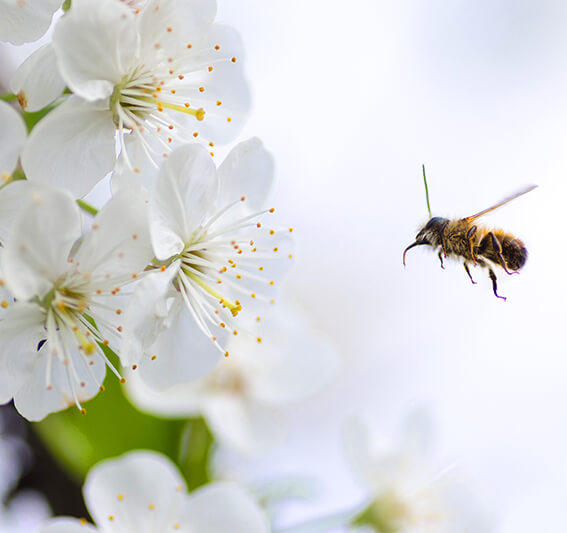Flowering Groups
As flowering time is critical for pollination, fruit trees are classified into various flowering groups, so that it is easy to choose cultivars that will flower at the same time and effect pollination.
When choosing varieties it can be assumed that varieties from the same or adjacent groups will pollinise each other. For example, the variety ‘Discovery’ is in Flowering Group 3 so can be pollinated by any varieties from Groups 2, 3 and 4. There are six flowering groups in total.
Our catalogue lists the flowering group of each variety.
Pollination
We grow more than 60 varieties of apple which are reputed to be self-fertile, or partially self-fertile. These will produce some fruit without a pollinisation partner though it is likely that even your self-fertile tree will perform better if there is a partner present.
The vast majority of varieties are self-sterile and must have a compatible variety nearby to fruit successfully. The donkey work is carried out by bees and insects that collect pollen from the flowers of one variety and deposit it on the flowers of another variety. This is called cross-pollination. The variety that provides the pollen is known as the polliniser while the agent that carries the pollen such as a bee or insect is known as the pollinator.
When choosing varieties it can be assumed that varieties from the same or adjacent groups will pollinise each other. For example, the Apple variety ‘Discovery’ is in Flowering Group 3 so can be pollinated by any varieties from Groups 2, 3 and 4.
To complicate things further, a few apple and pear cultivars are Triploids. These produce mainly sterile pollen and won’t be any use for cross-pollination, and for their own fruit to set, still need other trees. Bramley’s Seedling is a very famous example of a triploid. Therefore if you grow a triploid cultivar you may also need to grow two other pollinisers as well as the triploid, and these three cultivars must all flower at the same time. On the plus side, bees and insects can travel long distances and there is always the chance that your fruit tree will be pollinated by a neighbour’s tree or by wild fruit such as crab apple.
Our catalogue indicates the small number of varieties that are classified as Triploid.

